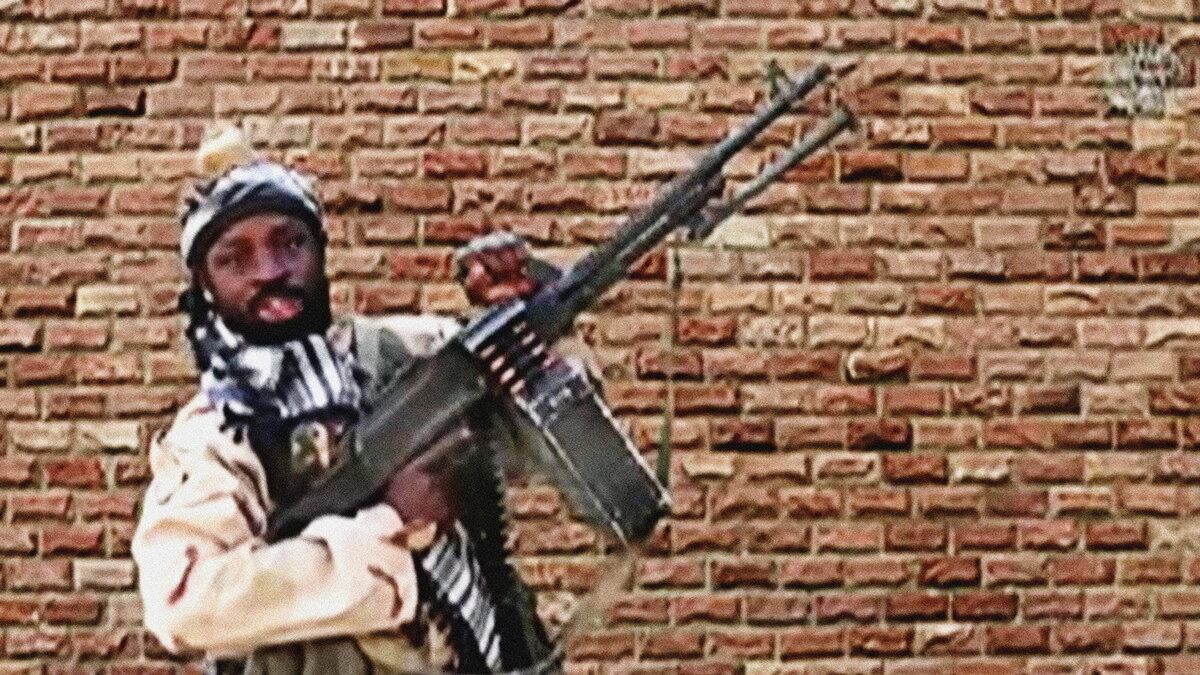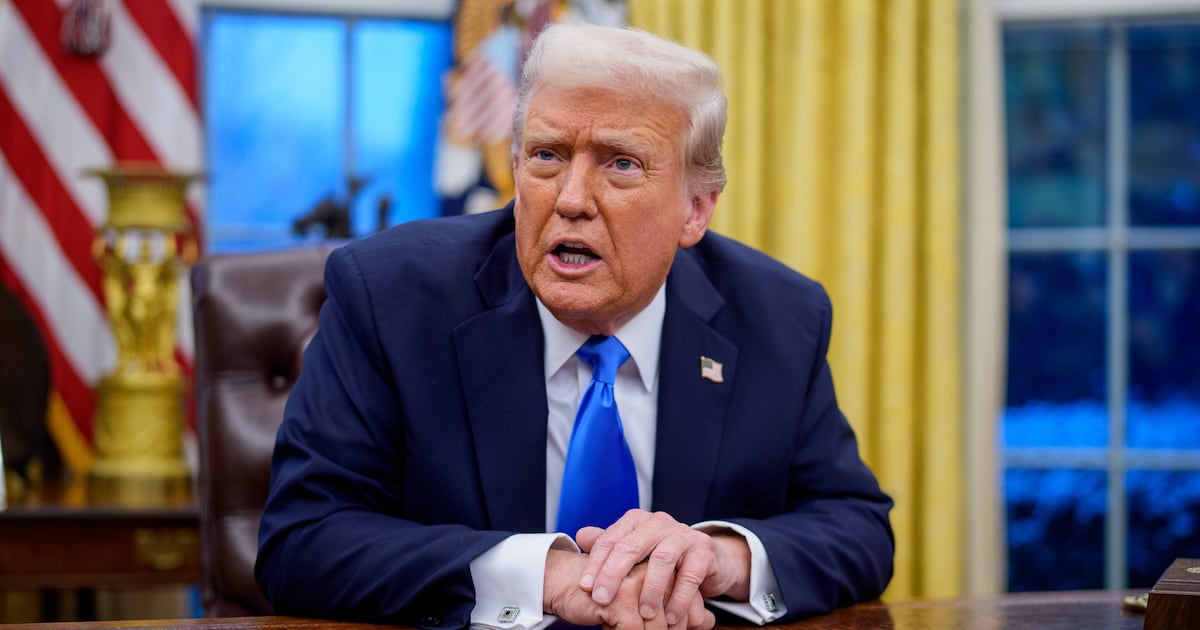If you recognize the term “Wahhabi” or “Wahhabism,” the conservative state religion of Saudi Arabia, it’s probably because of 9/11. It was in the wake of that attack that institutions like Freedom House began to publish reports about “Wahhabi ideology” that seemed to provide some intellectual context for a senseless event. The same goes for Salafism, for which there wasn’t even a standard spelling in 2001: The Guardian went with “Salafee” in one post-9/11 article.
The terms still tend to be tossed around by non-Muslims, with renewed vigor after the rise of ISIS, as examples of a “fundamentalist Islam” promoted by Saudi Arabia, which vaguely corrupted the Muslim world and was often embraced by jihadi terrorists. But understanding Saudi religion, and what it did abroad, requires considerably more nuance. It’s true that, for decades, the Saudis used their austere religious vision as a tool of soft power to promote their interests around the world among Arabs and also in Indonesia, in Nigeria, in Kosovo and almost anywhere else with a sizeable Muslim community. But over the course of six decades, the faith the Saudis spent so lavishly to spread had unpredictable effects on the ground, and its most violent apostles actually turned against the kingdom.
The Saudi brand started to deteriorate during the Gulf War of 1990–1991, when non-Muslim U.S. troops were accepted on the holy soil of Arabia in order to protect it from Saddam Hussein. That move, and the perceived hypocrisy of the Saudi clerics who greenlit it, dented Saudi Arabia’s cultivated image as a leader of Muslims everywhere. And it ended the golden age of Saudi dawa, which means literally “the call” or “invitation” to Islam, and refers more generally to proselytizing.
But 9/11 was something else. Fifteen out of the 19 hijackers were Saudi nationals and popular opinion about the kingdom quickly soured. Just six months after the attack, 54 percent of Americans agreed that “the Kingdom of Saudi Arabia is a state that supports terrorism.” The Gulf War was a blow to Saudi Arabia’s bid for leadership of the Muslim world, but 9/11 brought it to its knees.
The 838-page-long joint inquiry by the House and Senate Intelligence Committees into the 9/11 attacks published in 2002 contains a long-suppressed 28-page section on Saudi financing that was only declassified in 2016 and found that some of the hijackers “were in contact with, and received support or assistance from, individuals who may be connected to the Saudi Government.”
Something else happened while Saudi Arabia was in the spotlight: it experienced a 9/11 of its own. Al Qaeda, led by the ex-Saudi national Osama bin Laden, attacked major targets inside the kingdom, destroying a housing compound in Riyadh in 2003 and then Saudi oil fields in 2004.
The stunned Saudi government set up a joint task force with the U.S. to investigate terrorist financing, and in May 2003, introduced banking regulations that temporarily stopped all private charities from sending funds abroad. These shock waves would be felt around the Muslim world, where Saudi charity had become an integral part of education and development. In 2003, the kingdom briefly considered recalling its religious attachés, diplomats under the Saudi Ministry of Religious Affairs, Dawa, and Guidance who oversaw dawa activities in about two dozen foreign countries. In 2004, a royal decree was issued to centralize all Islamic charities.
Thus, 9/11 briefly imploded the transnational Saudi dawa apparatus. So when we talk about Saudi money today, it’s essential to keep this dynamic in mind; it is no longer accurate to refer to some kind of all-powerful, centralized, ideologically coherent global project. We need to appreciate it at face value: piecemeal, diluted, opportunistic.
DEFINING DEFINITIONS
Saudi Arabia’s mid-century ambitions to define orthodoxy in the Muslim world, fight revolutionary ideologies coming from Iran and Egypt, and support besieged Muslim minorities abroad stretched its global campaign, by the 1990s, into a project that frankly outpaced its capacities.
For the eminent Saudi scholar Madawi al-Rasheed, who lives in self-imposed exile in London, the phenomenon of jihadis like Bin Laden, a Saudi citizen by birth, perfectly encapsulates the tension between the kingdom’s rhetoric to “obey their current rulers at home while at the same time fostering the spirit of jihad abroad.” That gets to the heart of why Saudi dawa has such chaotic effects outside the kingdom’s borders.
Wahhabism is an ultraconservative religious movement founded by the fiery 18th-century Arabian preacher Muhammad ibn Abd al-Wahhab. It focuses on removing idolatry and “deviations” in Islam, and after Ibn Abd al-Wahhab signed a pact with the royal House of Saud, it became the official religion of the family and their successive attempts to consolidate a state on the Arabian peninsula, the last of which came together in 1932 and is modern-day Saudi Arabia.
Salafism, meanwhile, is a revivalist Sunni Islamic movement that seeks to return to the traditions of the salaf, the first three generations of Muslims in the seventh and eighth centuries. It came out of late 19th century Egypt, chiefly as a reaction to Western colonialism.
In practice, Salafis and Wahhabis have a lot in common. Both religious currents tend to promote personal austerity as well as intolerance of other beliefs, not only those of Christians, Jews, Buddhists, but of Muslims who have not embraced what they consider the true faith. Shia Muslims are a particular target. Wahhabism is highly linked to Saudi royal authority, which makes little sense outside the Gulf, so Saudi dawa tends to create Salafi communities abroad.
Inside Saudi Arabia, as proved most recently by Crown Prince Mohammed bin Salman’s brash moves to modernize civil society, the state can rein in the excesses of the Wahhabi clerics if it thinks that is necessary. Outside, Saudi-promoted Salafi movements are much harder to control.
Does Saudi dawa actively create terrorists? Sometimes, but in very specific conditions, like the Afghan jihad, when it sponsored people including Abdullah Azzam and Osama bin Laden. Has Saudi dawa inspired terrorists, jihadists, and extremists? Much more broadly, yes. But they are a subset of a broader universe. “Salafi-jihadism,” the strain of violent Salafism that includes al Qaeda, Boko Haram, ISIS, and others typically draws from a larger pool of nonviolent Salafis in a given region, and those broad communities often have direct connections to Saudi dawa.
The most infamous Salafi-jihadist group, ISIS, rose to global prominence claiming to be the world’s true Wahhabi state, and it set up its own printing press in Mosul in 2014 to publish Ibn Abd al-Wahhab’s texts, much to Saudi Arabia’s chagrin.
The surprisingly widespread phenomenon of hardline Muslims destroying ancient holy sites, from Palmyra to Timbuktu, also follows a distinctly Wahhabi logic of eliminating occasions for “idolatry” and “polytheism” by razing shrines and tombs. ISIS is the worst offender, but non-jihadists do this, too: in Bale, Ethiopia, Saudi-affiliated fundamentalists destroyed more than 30 Sufi shrines in the early 2000s. The world’s growing anti-Shia rhetoric, too, speaks in the distinctly Wahhabi language of “deviance” and “polytheism.” And even blasphemy convictions often echo the Wahhabi logic of takfir, “excommunicating” improper Muslims.
Even if Saudi officials occasionally decry the violent effects of past dawa, they are in an awkward position, given that these actions are completely in accordance with the ideas of the most famous Saudi preacher of all time.
Nigeria is an instructive example.
‘PRESERVING VIRTUE’
In December 2015, Abdullahi Muhammad Musa crammed into a sedan with six relatives for the five hour drive from Nigeria’s capital, Abuja, to the northern state of Zaria to celebrate Quds Day, the international expression of solidarity with Palestine. Abdullahi, 32, made it back to Abuja alive. But all the rest in that car, and at least 340 other civilians, were gunned down by the Nigerian military in what is now known as the Zaria Massacre.
All were followers of an outspoken Shia group, the Islamic Movement in Nigeria, that has long been under attack by Sunnis, Salafis, and the state. As in many other parts of the Muslim world, this anti-Shia sentiment was fueled by Saudi-oriented Salafis. But in Nigeria, it’s taken an especially deadly turn.
It’s estimated that roughly half of Nigeria’s 191 million people are Muslim, although religious demographics are so contentious that the question has not been posed on the census since 1963. The country is a huge arena for global contests over Islamic dogma, and in such a volatile religious climate, the rise of Saudi-affiliated Salafism stirred things up, and then spiraled in unpredictable directions.
Saudi Arabia started its outreach to West Africa shortly after Nigeria won independence from British rule in 1960. Within a decade, a generation of Salafis emerged in northern Nigeria, whose Muslims had, until then, been predominantly Sufi or non-denominational. Salafis created the Izala movement for “preserving virtue” and were influential in deciding the shape of sharia, Islamic law, which was implemented across the north of Nigeria starting in 1999.
The most infamous Nigerians to identify as Salafis are the members of Boko Haram, the Salafi-jihadist group responsible for hundreds of terror attacks and the kidnapping of thousands of schoolchildren since 2009. At one point, in 2015, Boko Haram even surpassed ISIS as the world’s deadliest terror group. But it did not emerge in a vacuum.
The founder of Boko Haram, Muhammad Yusuf, studied with the most prominent Saudi-educated Salafi in Nigeria, Jafar Mahmud Adam, and even briefly sought refuge, like many Islamists under fire, in Saudi Arabia itself.
The Salafi-jihadism of Boko Haram, although an extreme fringe, emerged from the rich Salafi tapestry that was woven in Nigeria over the previous half century. Since the 1960s, Saudi outreach cultivated deep personal contacts in the postcolonial nation and seeded opportunities to study in the kingdom. The resulting Salafis have clashed with both the reigning Sufi orders and the parallel, Iran-affiliated Shia movement. Some have been mainstreamed into government positions, while others laid the ideological groundwork for Boko Haram.
BOKO HARAM
In April 2014, Boko Haram boldly kidnapped 276 female students from their school in Chibok, in the northeastern state of Borno. The event horrified observers inside Nigeria and around the world, who were stunned at the inability of the state to protect the girls or to negotiate effectively with the terrorist group (112 of the 276 girls are still missing). In more recent incidents, Boko Haram has kidnapped over 1,000 children since 2018 and, as recently as 2018, abducted 110 more girls from the town of Dapchi. Even during one of my visits in May 2019, a handful of staffers were kidnapped from a girls’ school in Zamfara State. Easily the most infamous Islamic movement in northern Nigeria today, Boko Haram also has contributed to a devastating regional famine by preventing farmers from planting crops and blocking access to Lake Chad.
Since Boko Haram styles itself as a Salafi-jihadist group, it begs the question of how closely it is linked with the greater Salafi movement in the region, and of whether that Salafi movement would have flourished in northern Nigeria without Saudi dawa. In a word, the answer is no.
Saudi proselytizing has been integral to Salafism in northern Nigeria, and Boko Haram’s ideology directly springs from the Salafi corpus spread there by Saudi-educated Nigerian preachers. But in an ironic twist, the majority of mainstream Nigerian Salafis oppose the jihadi group and have even tried to wage public debates with its leaders, albeit to little effect. The resulting situation is typical of what Saudi proselytizing often looks like in the wild, rife with unstable by-products.
Boko Haram has praised al Qaeda and it pledged allegiance to ISIS in 2015, but it remains more a localized insurgency than a transnational jihadist group. In fact, it existed for six years as a nonviolent fundamentalist group and only turned violent in 2009, when its founder was killed.
Its context is deeply local to Maiduguri, the northeastern state where it is headquartered. And Salafism would never have entered Maiduguri were it not for a preacher named Jafar Adam, the most popular and charismatic Saudi educated Salafi in modern Nigeria. He founded a group called Ahl Al-Sunna, which considered itself more purely Salafi, and less tainted with politics, than Izala had become by the new millennium. And Adam’s star student was a young man named Muhammad Yusuf. Adam even appointed him to lead Ahl Al-Sunna’s youth wing. But just as Adam branched off from Izala in a more hardline direction, so Yusuf did to Adam, whom he rejected as insufficiently Islamic.
In 2007, Yusuf published the foundational manifesto of Boko Haram: “This is our creed and method of proclamation,” which mostly consisted of quotations from Saudi Salafi texts. Boko Haram was not his own name for the group. He called it Jama’at Ahl as-Sunnah lid-Dawah wa’l Jihad, the Group of the People of the Sunnah for Preaching and Jihad. Nigerian media came up with the shorter cognomen, which captured Yusuf’s central idea that Western education, or “Boko” in Hausa, was forbidden.
This newer, even more charismatic breakaway movement drew hundreds of young people. Everyone in Maiduguri knew Yusuf and vice versa. “Once I met him in a gas station and he instantly recognized me and asked whether I was still part of the army of Satan,” one resident told me. Yusuf eventually attracted thousands of followers across the northeastern states and even from neighboring Niger, Chad, and Cameroon. But within a few years, this volatile Salafi coterie headquartered in Maiduguri became an ouroboros, the snake that eats its own tail.
In 2007, Jafar Adam, the most influential Saudi-educated nonviolent Salafi preacher of the decade, was assassinated under mysterious circumstances—most likely on the directive of Boko Haram. And then, in 2009, Boko Haram clashed with the Nigerian military amid allegations it was building bombs. One thousand people died, 700 in Maiduguri alone. Among them was Muhammad Yusuf, who was interrogated by police and then executed.
The heavy-handed military confrontation was the proximate cause for Boko Haram’s turn toward violence, but in the bigger picture, it’s obvious that Boko Haram could not have formed as a group, nor attracted its popular base across multiple states without its ideological background and the charismatic Salafi preachers at its core.
Boko Haram’s material links to Saudi and Gulf actors are basically opportunistic. Around 2002, Osama bin Laden reportedly sent an aide to Nigeria with $3 million to distribute among local groups including Boko Haram. In 2015, Boko Haram switched allegiance to the Islamic State and restyled itself as the “Islamic State in West Africa.” It’s worth noting that, in its current, violent iteration, Boko Haram considers Saudi Arabia to be a state of unbelief.
Under the leadership of Abubakar Shekau, who took over from Yusuf in 2009, Boko Haram declared its enmity toward literally every other Islamic group and entity imaginable, including the Sufis, Shia, Izala, the Nigerian government, and the Kingdom of Saudi Arabia.
In a video message filmed in December 2014, Shekau, holding a rifle that he periodically shot off to punctuate his address for emphasis, screamed, “The Saudi state is a state of unbelief, because it is a state that belongs to the Saud family, and they do not follow the Prophet … the Saudi Arabians, since you have altered Allah’s religion, you will enter hellfire!”
Saudi Arabia was the site of an attempted negotiation between Boko Haram and the Nigerian state in 2012 to 2013. Perhaps unsurprisingly, the peace talks held there did not make much headway.
Given the persistent rifts and splintering among Nigerian Salafis, it’s not surprising that Boko Haram experienced its own internal split in 2016, where a rival named Abu Musab al-Barnawi made a bid for leadership over Shekau and linked his faction more closely with ISIS.
There’s no chance Saudi Arabia foresaw any of these chaotic effects back in 1965, when its dawa outreach to Nigeria started. Indeed, it’s likely that every successive splintering of Nigerian Salafism became more and more distant from the original Saudi soft power project, which was formed on close personal contacts between Nigerian and Saudi leaders, but became more localized over time. Spreading such a charged ideology abroad was like opening a can of worms. It’s why so many jihadist groups today prize Wahhabi theology and revile the kingdom itself.
Thus the central paradox today: even if Saudi Arabia is embarrassed by its reputation for spreading extremism and the unsavory effects of its campaign, it’s not really a problem the Saudis can solve anymore.
This excerpt is adapted from The Call: Inside the Global Saudi Religious Project, by Krithika Varagur.







